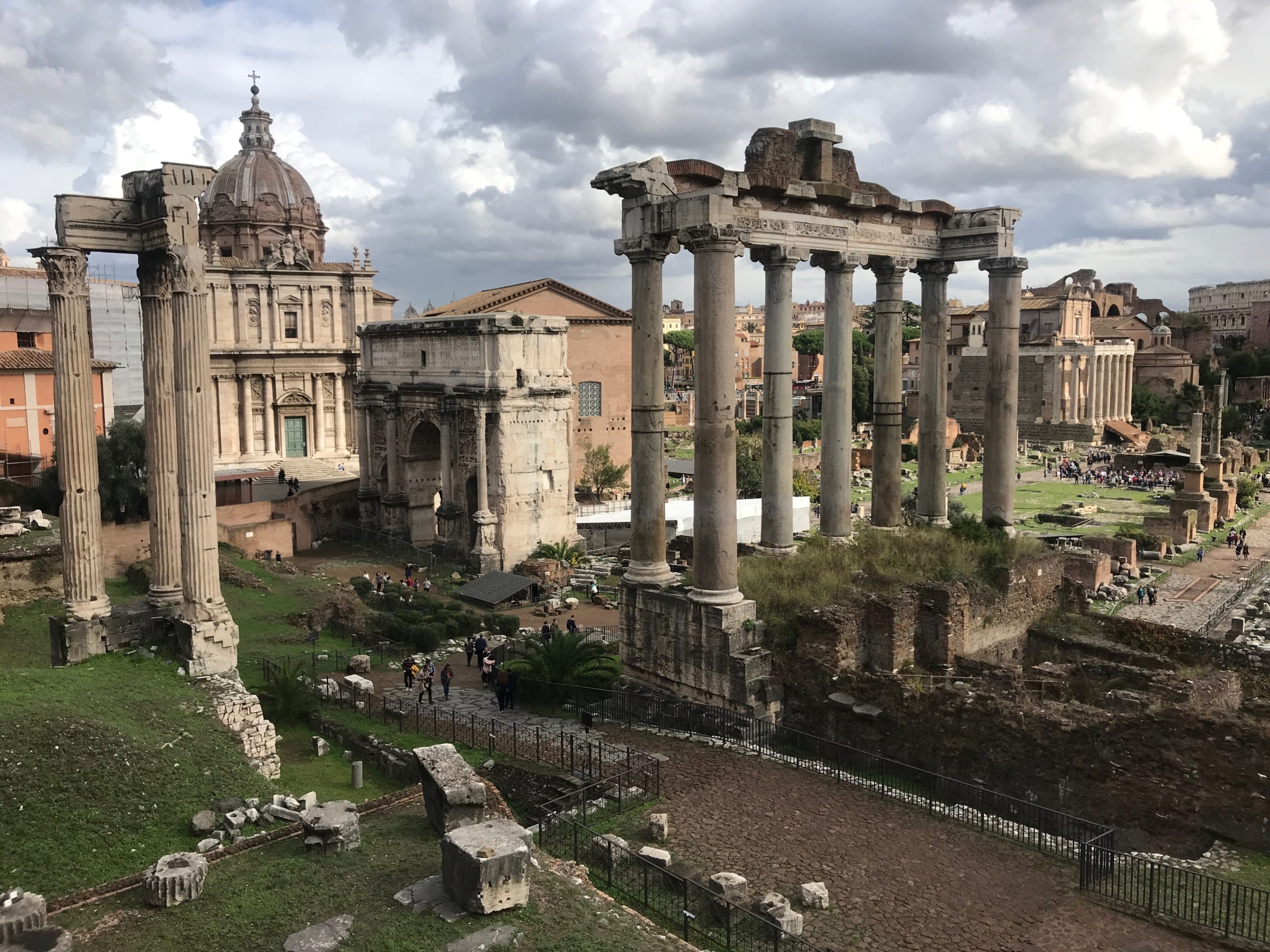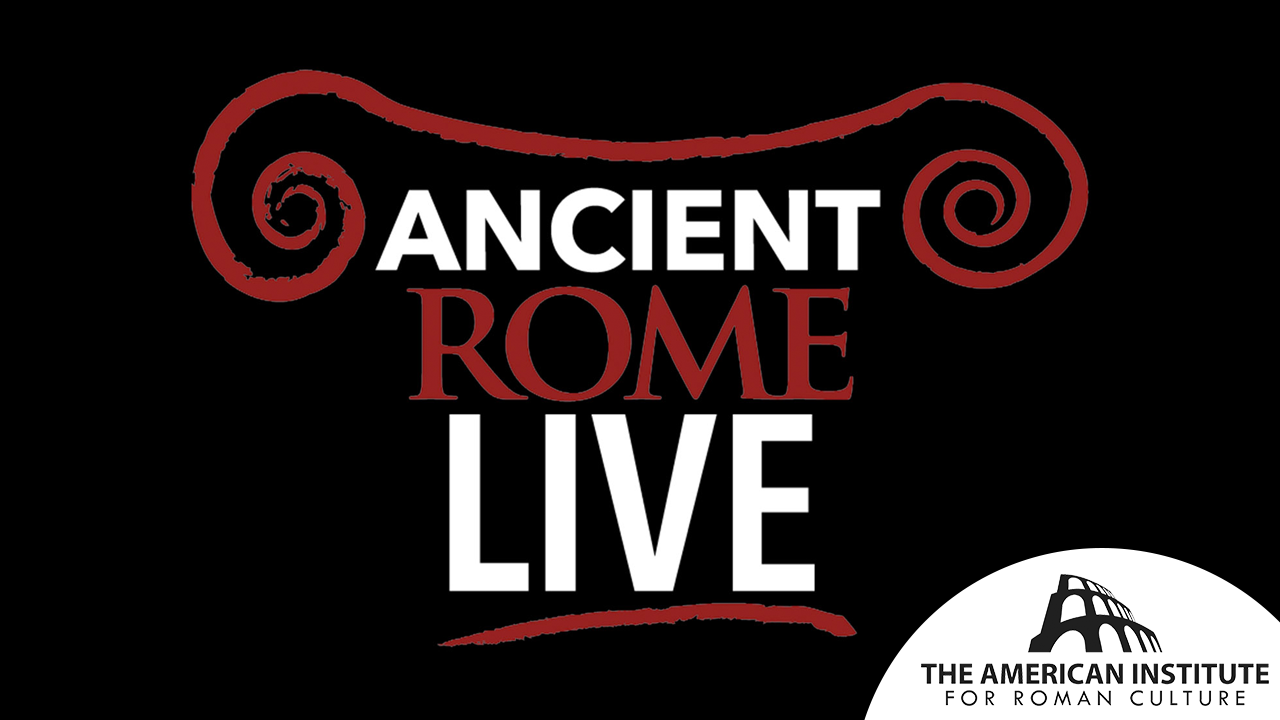Start with our video overview:
Literary sources tell us about the origins of Rome, namely those by Livy, Dionysius of Halicarnassus, and Plutarch. The legend of Romulus and Remus connects the lineage of the Romans to Aeneas, the Trojan hero son of the Greek goddess Aphrodite. According to legend, Romulus founded Rome in 753 BCE, becoming the first king of Rome and thus beginning the Regal Period.
In 507 BCE, after an era of prosperity and tyranny under the seventh and last king, Tarquin the Proud, the monarchy fell, and Rome became a Republic. It was an oligarchic government with magistrates and councils elected by powerful aristocratic families who controlled the city. This period lasted more than four centuries. The beginning of the end of the Republic arrived with the Triumvirates, when personalities like Julius Ceasar, Mark Anthony, and Augustus restructured the political power dynamics of Rome.
In 27 BCE, Augustus became the first emperor, ushering in the Imperial Period. During this time, Rome grew to its greatest territorial extent, fought countless wars against its neighbors, and constructed many of the famous monuments that are still standing today, like the Colosseum and the Domus Aurea. The unified Empire reigned until 395 CE when, in part due to its multi-continental expansion, the Empire was divided between Western and Eastern empires. The Eastern Empire was governed by its capital Constantinople (modern-day Istanbul) and survived as the Byzantine Empire long after the Western Empire had fallen.
The end of the Imperial Period coincides with the period of Late Antiquity, which progressed into the Middle Ages. Around the 5th century CE, Christianity was growing into an important institution. Clashes between the Popes and the Emperors caused continued tensions and greatly influenced Roman life. The fall of the Western Roman Empire was a long and gradual process, marked by political crises and invasions which severely affected the city of Rome. In 476 CE, the last emperor Romulus Augustulus was deposed, a date which many believe marked the final fall of the Roman Empire.
From that point and throughout the Middle Ages, the Catholic Church stood as the sole sovereign political institution in Rome. Artistically and architecturally, the Middle Ages in Rome were characterized by the Romanesque and Gothic styles. In the 15th century, the Renaissance transformed Europe with a revival of classical cultural, social, and philosophical ideals. During the Renaissance, celebrated artists like Leonardo da Vinci, Michelangelo, and Rafael made their marks on the artistic legacy of Italy.
Bibliography
- Britannica, The Editors of Encyclopaedia. “Roman Empire”. Encyclopedia Britannica – https://www.britannica.com/place/Roman-Empire/Height-and-decline-of-imperial-Rome
- “The History of Rome in the Regal Period. The Journal of Roman Studies, 47” by Plinio Fraccaro – https://doi.org/10.2307/298566
- “Ancient and Modern Rome” by G. A. Harrer – https://www.jstor.org/stable/41310142
- “The Cronology of Early Rome” by Henry A. Sanders – https://www.jstor.org/stable/261793
- “The Vanishing Paradigm of the Fall of Rome” by Glen W. Bowersock – https://doi.org/10.2307/3824699
This content is brought to you by The American Institute for Roman Culture, a 501(C)3 US Non-Profit Organization.
Please support our mission to aid learning and understanding of ancient Rome through free-to-access content by donating today.
Cite This Page
Cite this page as: Darius Arya, The American Institute for Roman Culture, “Introduction to Ancient Rome” Ancient Rome Live. Last modified 10/24/2019. https://ancientromelive.org/introduction-to-ancient-rome/
License
Created by The American Institute of Roman Culture, published on 10/24/2019 under the following license: Creative Commons: Attribution-NonCommercial-ShareAlike. This license lets others remix, tweak, and build upon this content non-commercially, as long as they credit the author and license their new creations under the identical terms. Please note that content linked from this page may have different licensing terms.



